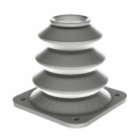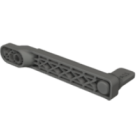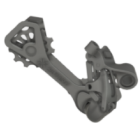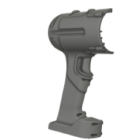Aerospace additive manufacturing
The aerospace industry was one of the earliest adopters of additive manufacturing — and for good reason. In a sector where every gram of weight matters, every design must perform flawlessly under extreme conditions, and customization is a constant demand, 3D printing offers unique advantages. From prototyping to serial production, additive technologies like SLS, DMLS, and Binder Jetting are now integral to aerospace design and manufacturing workflows.
Lightweighting without compromise
Weight is a critical factor in aerospace design. Reducing the mass of a component by just a few grams can result in significant fuel savings over the lifetime of an aircraft or satellite. Additive manufacturing enables engineers to replace bulky, over-engineered parts with lightweight structures such as lattices, topology-optimized components, and consolidated assemblies that cannot be produced with traditional machining or casting. Materials like titanium, Inconel, and reinforced nylons offer the strength-to-weight ratio needed to meet stringent performance criteria.
Design freedom and functional integration
One of the most powerful aspects of aerospace 3D printing is the ability to combine multiple parts into a single, complex structure. This eliminates fasteners, simplifies assembly, and improves reliability — essential in systems where failure is not an option. Engineers can now create aerodynamic, lightweight geometries with internal channels for fluid flow or cooling, optimizing both form and function in ways previously impossible.
From prototypes to certified flight parts
Initially, the use of 3D printing in aerospace was limited to rapid prototyping. Today, that’s changed dramatically. We now see certified end-use parts flying in commercial aircraft, military drones, satellites, and spacecraft. Jet engine brackets, turbine blades, air ducts, and structural brackets are increasingly produced using metal AM processes like DMLS and Electron Beam Melting (EBM). In parallel, SLS and MJF produce strong, functional polymer parts used in cabin interiors, drones, and satellite housings.
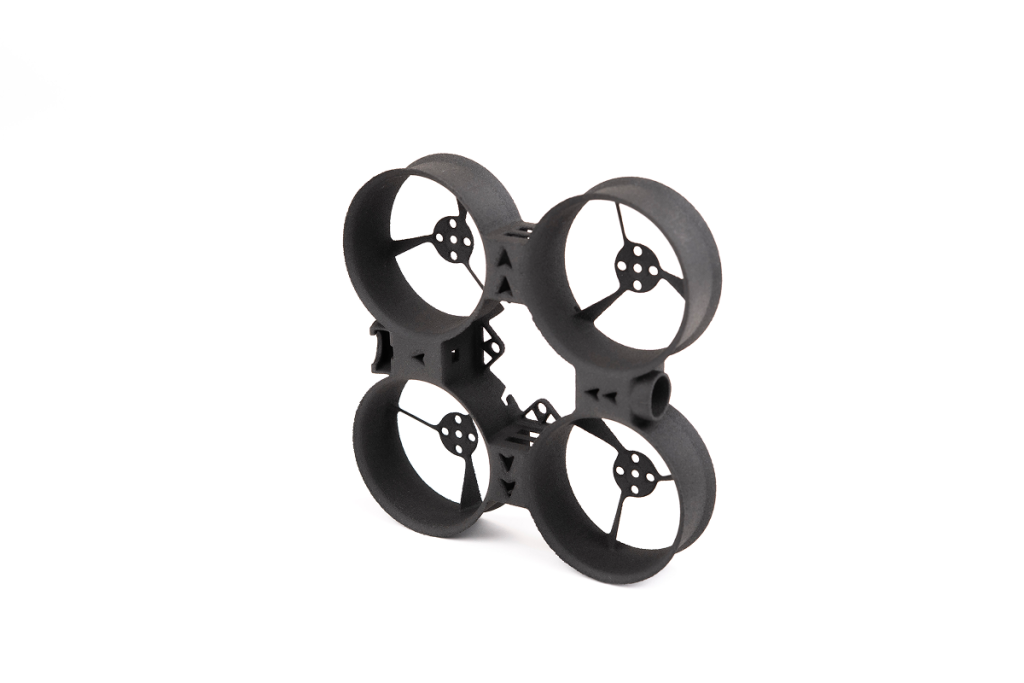
Supply chain resilience and on-demand production
Aerospace additive manufacturing is also a strategic response to global supply chain challenges. Instead of relying on long-lead-time parts and tooling, companies are moving toward digital inventories — printing spare parts or tools only when needed. This approach reduces warehousing, shortens MRO timelines, and improves readiness in aerospace operations, particularly for military and remote applications.
Regulatory momentum and market growth
Standards bodies like NASA, ESA, ASTM, and FAA are continuously developing qualification frameworks for additive components. As confidence grows in repeatability and traceability, the aerospace 3D printing market is expected to exceed $10 billion by the end of this decade, fueled by both commercial and defense applications.
Notable examples of aerospace 3D printing
- GE Aviation famously produces 3D-printed fuel nozzles for its LEAP engines — reducing part count from 20 to 1 and improving efficiency.
- NASA uses additive manufacturing for critical engine components, including combustion chambers and aerospike nozzles.
- Boeing and Airbus incorporate dozens to hundreds of printed parts across their fleets, focusing on cabin elements, structural mounts, and ducting.
- Rocket Lab and Relativity Space are pioneering fully 3D printed rockets, leveraging design freedom for faster development cycles.
Summary
Additive manufacturing in aerospace has moved far beyond experimental. It’s now a validated, certified, and strategically adopted technology — used not only to speed up development but to unlock entirely new ways of thinking about part design, logistics, and performance. Whether it’s producing a lightweight bracket, a functional aerodynamic surface, or a high-heat turbine component, aerospace 3D printing is reshaping how the industry builds for Earth and beyond.
Explore also
- 3D printed prototype
- 3D printing in medical industry
- 3D printing for dental applications
- Application of 3D printing in industry
- Application of 3D printing in architecture
- 3D automotive: additive manufacturing in car production
- 3D printing in civil engineering
- 3D printing in education
Related categories
 Austria
Austria  Bosnia and Herzegovina
Bosnia and Herzegovina  Bulgaria
Bulgaria  Croatia
Croatia  Czech Republic
Czech Republic  Denmark
Denmark  Estonia
Estonia  Finland
Finland  France
France  Germany
Germany  Greece
Greece  Hungary
Hungary  Ireland
Ireland  Italy
Italy  Latvia
Latvia  Lithuania
Lithuania  Poland
Poland  Portugal
Portugal  Romania
Romania  Slovakia
Slovakia  Slovenia
Slovenia  Spain
Spain  Sweden
Sweden  Switzerland
Switzerland  United Kingdom
United Kingdom  Ukraine
Ukraine  China
China  Hong Kong
Hong Kong  India
India  Israel
Israel  Japan
Japan  Malaysia
Malaysia  Philippines
Philippines  Saudi Arabia
Saudi Arabia  South Korea
South Korea  Taiwan
Taiwan  Thailand
Thailand  Turkey
Turkey  United Arab Emirates
United Arab Emirates  Egypt
Egypt  South Africa
South Africa  Tunisia
Tunisia  Canada
Canada  Mexico
Mexico  United States
United States  Brasil
Brasil  Colombia
Colombia  Australia
Australia  New Zealand
New Zealand 



